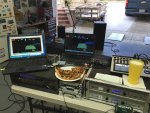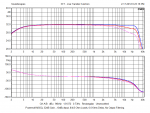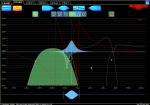Re: 60 Degree DIY Mid Hi
Would there be interest/benefit in a new thread dealing with testing and tuning the DIY's? I've discussed it with Peter and he's in favor. I've been working on some FIR and IIR settings and have lots of questions for the more experienced Smaart/SIM users here.
Would that thread belong in the DIY Forum? Maybe Bennett can answer that.
What say you guys?
A lot of the people I see using Smaart don’t really understand exactly what they are measuring.
If you use an FFT with a time window that’s big enough to capture the low frequencies you are usually capturing other stuff you don’t want that mucks up your measurement.
There are basically two solutions – measure it in an anechoic chamber – or measure it a long way away from any boundary’s (12ft in the air or more) where the mic is relatively close (6 ft) to the speaker.
Note: this is a mid-Hi box operating from 100Hz up (100Hz wave length = 11.15ft, 10ms per cycle). For low frequency you can place the mic on the ground.
As a practical solution your setup with the ground sloping away looks great.
Would there be interest/benefit in a new thread dealing with testing and tuning the DIY's? I've discussed it with Peter and he's in favor. I've been working on some FIR and IIR settings and have lots of questions for the more experienced Smaart/SIM users here.
Would that thread belong in the DIY Forum? Maybe Bennett can answer that.
What say you guys?










